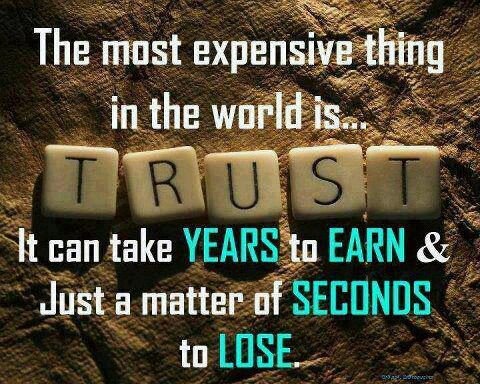Staying Ahead of the Chaos

Here we are in May – the time for graduations, weddings, sports tournaments, and Memorial Day. The time when my schedule can seem overwhelming and non-stop. Mostly because the personal invades my professional time. Why when they overlap does my stress level spike?
A recent survey I read said nearly ¾ of leaders are already stressed out. And this same survey mentioned that 70% of senior leaders admit that burnout and stress affect their ability to make decisions. Yikes, not good!
Being stressed out not only affects your ability to make strong business decisions but it affects your health, it affects your attitude, and it affects your productivity.
Back in January I was working on my 2024 goals. I realized that I needed to be gentle to myself. Even when I think I should be pushing, hustling, or striving – how can I be gentle with myself and let go of the guilt? That negative Nelly in my head needed to take the year off. As a business owner not only do we have that annoying Nelly ragging on us, but we have employee requirements, client needs, and piles of work that needs to get done to keep our bank accounts at a healthy level. Here are some tips and tricks I personally use to stay above the stress and chaos and to balance the professional with the personal commitments.
- Know your body’s stress signals – Paying attention to your body is the first step in reducing stress. Does your heart race? Do you get antsy or fidget a lot when stressed? Do you get irritable? For me either my foot starts moving a mile a minute or I get blotchy. I know if I am feeling stressed and upset, I can feel my core heat up and the rash and blotches run up my neck. It is sooooo attractive, but when it happens, I know I need to take a few minutes, remove myself from the situation, and breathe. My body tells me even when my head tries to ignore it.
- Get enough sleep – sounds easy right? Nope, I can tell you from experience it isn’t always simple. First you have to discover how much sleep your body needs and then honor that amount. Arguing with your body isn’t going to change the fact that you need at least 7 hours of sleep. And I don’t know about you, but I can’t pull off less than 7 hours of sleep anymore. I have NO idea how I functioned for years on 4 hours a night. Because I get up at O’Dark-Thirty my bedtime is earlier than anyone else in my household. It meant a few weeks of experimenting with schedules, buying an eye mask (so the light doesn’t bother me as he sits there and reads) and sometimes ear plugs when the football game is still on. In order to be your highest, most productive self, you need to take care of YOU first. Start with sleep.
- Move your body – we all know exercise is good for us, but moving your body can reduce your stress levels and help you breathe. Remember that cold snap we had back in January?! (Brrr!) It was so dang cold I didn’t do my long walk every morning. So instead of feeling guilty about that, I walked around the building at work whenever I had 10 minutes to spare. Try not to make exercise an all or nothing thing. I struggle with that constantly, but I do know that any movement is better than none. Do things that you enjoy. Exercise should be fun, not a chore. Loved roller skating as a kid? Try it again. Ride your bike with abandon, not determination. Skip, jump rope, and try that yoga studio up the street. Find something that makes you forget you are doing something healthy for yourself.
- Create boundaries not barriers – Where to begin? Go through your page long to-do list and create priorities. Be truthful about what you must get done vs. what you would like to get completed. Decide what is non-negotiable and start there. I also schedule time for personal “odds and ends.” Having time on my calendar to pay the bills, or to run an errand, or whatever small personal task is requiring my personal attention resolves the guilt I once had about using “work” time to do personal items. Remember you don’t want barriers as it cuts off communication. You want boundaries which will help you structure your time.
- Use Productivity Tools – The biggest change in 2024 is I now schedule time to think, brainstorm, and plan. What is the productivity tool I am referring to? Your calendar. Use it and then stick to your “appointment.” I wouldn’t cancel on a client so why do I cancel on myself or my own business development. Having time allotted to my own business helps me stay focused on its development. Another productivity method is to “eat the frog.” Basically, that means to pick the task that is the hardest or biggest, or the one you just really DON’T want to do and do it first thing in the morning. Once you get that accomplished the sky is the limit for the rest of the day – AND no matter what else happens you are productive because you got that “frog” crossed off your list.
If you Google “Self-Care for Busy Entrepreneurs” you will find a ton of other resources. During this season of busyness, I encourage you to find something that helps you reduce your stress, be your best self, and be at your most productive. And don’t forget to breathe!

One of the most overused and underexplained leadership concepts is that of “Lead by Example.” It should be self-explanatory yet in every one of my leadership workshops I have new leaders who are brave enough to ask questions on this concept.
“Does this mean I have to do the same work they are doing?”
“Does this mean I can never, ever, make a mistake?”
“Does this mean I can’t laugh and have fun?”
The way I explain the concept of leading by example is simple. Leading by example is demonstrating the behavior you want to see in others. You don’t push your team into the excellence you expect from them, you show them how it is done.
Leading by example isn’t grand gestures. In my opinion the small things you do as a leader have more power and go a long way to improving your team. For example, if you want everyone to be on time for a meeting, you had better be on time for that meeting.
A leader who practices leading by example not only earns the respect from their team but earns respect from their bosses as well. Demonstrating the behavior you want to see inspires confidence and fosters a collaborative team.
Not sure where to begin? Here are 5 positive ways to lead by example in the workplace.
- If you say you are going to do something, make sure it gets done! This is one of the most efficient, and fastest, ways to build trust with your employees. It demonstrates to the team your own level of commitment. By following through with your promises, they will respect you and have confidence in you as a leader.
- Follow the rules. If you want others to follow the policies and procedures of the company, you had better follow them as well. With rank does NOT come privilege (nor the right to disregard the rules). Instead rank requires responsibility. And remember, rules don’t have to be negative and can instead clarify expectations and responsibilities.
- Listen. Listen to your employees, your fellow managers, and the leaders you report to. Listen to consultants, mentors, and teachers. Everyone has something of value to add to a conversation. Interacting with your team, by listening to them, helps them feel comfortable coming to you about any issues. Besides, the more you truly listen, the more you learn.
- Keep growing and learning. Every leader understands they need to learn and grow to continually improve their leadership skills. Attend workshops, training opportunities, read business book summaries or an article instead of mindless scrolling. And don’t bad mouth or put down those workshops. That sets an example too. Instead, let your team see you stretching your mind and continually improving your skills. Encourage them to learn and stretch themselves as well.
- Watch what you say and do. Welcome to leadership. You are now a celebrity. Your staff is your paparazzi. They are watching, and learning from you, how to behave. Be aware of how your team could interpret what you say, or how you act in any given situation. Yes, work (and life) can be stressful. But flying off the handle and dropping 15 F-bombs may make you feel better but what message does it send to your paparazzi; I mean your team? How are you going to react if someone on your team behaves that way (and worse in front of YOUR boss?).
Everyone has their own unique qualities that make them a good leader. There is no one way to be an exceptional leader. Good leadership is about motivating and inspiring your team as well as meeting your production requirements. When you emulate the behavior you want to see in your team members, you encourage your team to practice effective communication, incorporate collaborative team practices, and you show them that they matter.
Want to talk about ways to put your team first, but maintain your own sanity? Give me a call and let’s discuss how to implement the lead by example concept without losing your authentic self.

Whenever I teach a workshop on communication I start with the concept of trust. Why do I begin with the concept of trust? Because without trust, communication is superficial. Think about it –if your communication, as a leader, is shallow or non-existent, your employees, your teams, and your colleagues will essentially ignore what you are trying to say. Have you ever been in an organization or on a team where there were trust issues? Where you couldn’t believe anything your leader told you or you didn’t trust your colleagues? That is exhausting and I admit, even though I tried to tough it out, I ended up leaving. You don’t want your employees to feel that way, so let’s explore trust in the workplace.
Trust in the workplace is a fundamental building block and can be established, enhanced, and accelerated through effective communication. Trust can take a long time and a lot of effort to develop, but it takes only one event to weaken or eliminate it. If you believe there are trust issues in your company or your team here are some things to consider.
First, know why Trust is an important factor in communicating.
- Trust provides positive morale and team motivation.
- Trust allows for team collaboration.
- Trust improves efficiency.
- Trust empowers decision making.
- Trust decreases stress levels.
- Trust improves an employee’s performance.
Second, know how you as a leader can build trust.
- Do what you say you are going to do – be reliable!
- Be transparent and honest.
- Take ownership of your mistakes, issues, and your milestones / celebrations.
- Be proactive in understanding and talking about issues.
- Exhibit empathy with a genuine concern for the wellbeing of others.
- Maintain accountability by setting clear priorities.
Everyone in leadership has heard the advice to lead by example. When building trust, or rebuilding trust, it begins with you – the Leader. This concept is essential and non-negotiable as far as I am concerned. You must listen to your team / employees, deliver on what you promise, value the people around you, and resolve conflicts quickly and professionally. If you want your team to behave in a certain way, and most importantly trust you – you have to be trustworthy yourself.
Remember, actions speak louder than words so put your money where your mouth is and let’s get to work!
